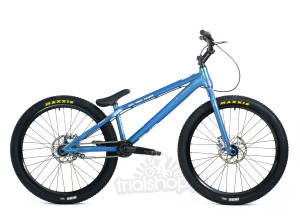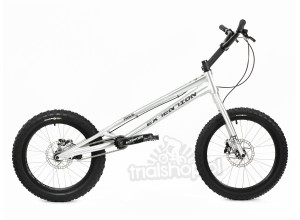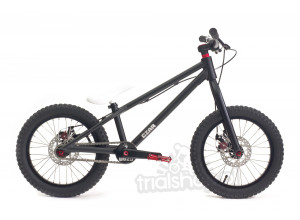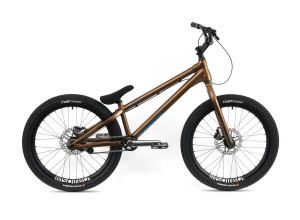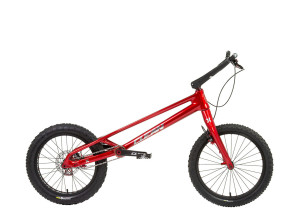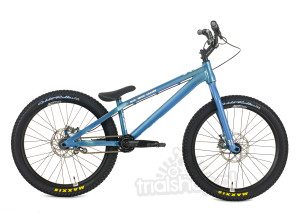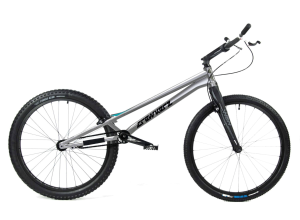Trackstanding is a passive skill that develops over time. In our opinion, practicing it in the long run doesn't make sense (unless we just want to learn how to stand still :)) as it develops itself while learning other techniques. Learning to stand still can be somewhat tedious. However, it's worth knowing the general principle of the trackstand and learning reflexes that allow us to maintain balance for a longer time and are also a gateway into the more advanced trials moves.
In trials, one rarely stands still in complete stillness with locked brakes. Usually, this technique is performed without brakes allowing the bike to roll forward and backward. The principle seems complicated at first but soon becomes second nature - for most people doing trials, standing on a bike is as natural as standing on legs.
The key to the trackstand are rotated handlebars and an uphill position. Why? Because with rotated bars, we are essentially turning. This gives us the ability to regain balance after we lose it. However, we're only turning in one direction. This is where the hill comes in. By positioning ourselves on an incline, we can roll backwards, thus turning in the opposite direction, without moving the bars.
It's best to start learning on an approx. 10% incline. This makes it easier to master the principle of slowly rolling up and down.
- Turn the handlebar to the right by about 45 degrees
- Transfer a significant part of your body weight to your hands and handlebar
- Stand with your left foot in front (cranks parallel to the ground)
- Don't press the brakes
- Shift some weight onto the leading leg so that the bike doesn't roll backward
In this position, the bike will behave as follows:
If we press on the crank, the bike will turn to the right. If we release pressure from the crank, the bike will roll back turning to the left. And this is the whole principle the trackstand. Thanks to these movements, we regain balance when we lose it.
- If we lean to the right, we should kick the crank until we feel that we are balanced again. Then we can momentarily lock the brakes so that the bike doesn't escape from under us.
- If we lean to the left, we gently release the crank and let the bike roll back until it finds its balance again.
- Turn the handlebar to the left by about 45 degrees
- Transfer a significant part of your body weight to your hands and handlebar
- Stand with your right foot in front (cranks parallel to the ground)
- Don't press the brakes
- Shift some weight onto the leading leg so that the bike doesn't roll backward
In this position, the bike will behave as follows:
If we press on the crank, the bike will turn to the left. If we release pressure from the crank, the bike will roll back turning to the right. And this is the whole principle the trackstand. Thanks to these movements, we regain balance when we lose it.
- If we lean to the left, we should kick the crank until we feel that we are balanced again. Then we can momentarily lock the brakes so that the bike doesn't escape from under us.
- If we lean to the right, we gently release the crank and let the bike roll back until it finds its balance again.
You may want to try a level surface. This introduces a new element to the game. We can no longer ride backwards by simply releasing pressure from the crank. Instead, we need to pull the bike in the direction it needs to go. In order to gain momentum, briefly locking the front brake can help. When the body gains momentum, release the front brake and pull the bike with you while counterrotating the cranks ever so slightly.









